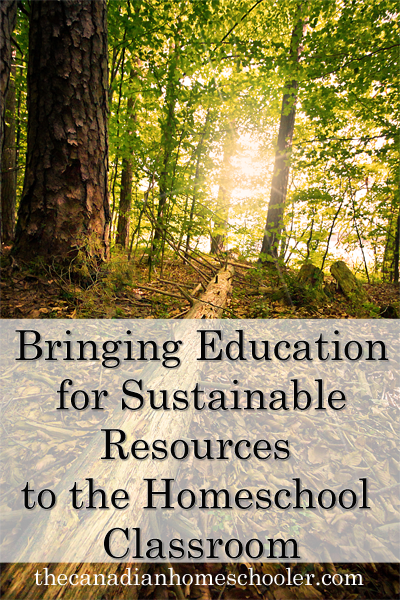Few can argue that we are rapidly altering the basic physiology of the planet. Resource depletion, environmental degradation and an increasing frequency of violent weather events are clear indicators of the ecological thresholds humans are crossing. Given these warning signs, what should be the response of education? What content and pedagogy are appropriate if as some suggest, we are now educating for survival.
In 1987, the World Commission on Environment and Development released findings and recommendations in a report entitled Our Common Future. Reaction to it initiated a global dialogue on the concept of sustainable development which it defined as “development which meets the needs of the present generation without jeopardizing the ability of future generations to meet their needs.” 1 It is now generally accepted among leaders in government, science, health and economics that sustainable development provides the surest route to securing a healthy future for all of us and that education for sustainable development is essential to its success.
EDUCATION FOR SUSTAINABLE DEVELOPMENT: Education for the well being of the planet and its people.
 The goal of ESD is to provide students with the knowledge, skills and experiences required for responsible citizenship. In examining key themes related to sustainable development (climate, biodiversity, poverty, social justice, to name a few) ESD emphasizes the interdependence which characterizes the world in which we live. It requires students consider the interplay among the environment, economy and health of a society when exploring these issues. It helps them to become systems thinkers.
The goal of ESD is to provide students with the knowledge, skills and experiences required for responsible citizenship. In examining key themes related to sustainable development (climate, biodiversity, poverty, social justice, to name a few) ESD emphasizes the interdependence which characterizes the world in which we live. It requires students consider the interplay among the environment, economy and health of a society when exploring these issues. It helps them to become systems thinkers.
In an effort to draw attention to the importance of ESD, The United Nations declared 2005-2014 as the “Decade of Education for Sustainable Development”. As the Decade draws to a close, monitoring efforts reveal that while activity has varied within and among nations and around the globe, the benefits of ESD implementation have been consistent and profound. These include higher rates of student engagement across all grade levels, stronger links between school and community and evidence of a shifting mindset that recognizes the connection between sustainable development and quality of life. 2 Perhaps the most significant contribution of ESD in the classroom has been a renewal of the process of teaching and learning. ESD’s emphasis on systems thinking, values-based learning, subject integration and linking knowledge to action have brought to the forefront a number of key learning strategies that are changing how teachers teach. 3
As a follow up to the Decade, UNESCO will launch its Global Action Programme on ESD in November 2014 to build on these achievements and ‘scale up’ action in all areas and levels of education for sustainable development. Five priorities have been identified. They include advancing policy, integrating sustainability practices into education and training, increasing the capacity of educators and trainers, empowering youth and encouraging local municipalities to develop community-based ESD programmes.
ESD IN CANADA: LSF is leading the way
Since 1991 Learning for a Sustainable Future(www.lsf-lst.ca) has been leading Canada’s efforts in ESD. In addition to its key role in reorienting education policy to embrace the principles of sustainable development, LSF has been instrumental in transforming teaching and learning. Through its innovative print and video resources, professional development opportunities for teachers and youth empowerment programs for students, LSF continues to advance ESD and improve practice.
More recently the Council of Ministers of Education, Canada has come to play a greater role in the implementation of ESD. In 2008 CMEC identified Education for Sustainable Development as a core activity in its policy document ‘Canada 2020: A Framework to Enhance Education in Canada’. It has also created a national working group responsible for acting on this commitment.
RESOURCES 4 RETHINKING:
To support homeschoolers interested in implementing ESD, Learning for A Sustainable Future has developed an on-line database for educators. Resources 4 Rethinking (www.r4r.ca) can connect families to more than 1000 resources that explore important issues in our world today through an ESD lens. Available in both French and English, the majority of these materials can be downloaded for free.
Resources included in the database have been reviewed by experienced educators and matched specifically to relevant curriculum outcomes for all provinces and territories. This crucial feature allows homeschoolers to search for relevant ESD materials by province, grade, subject area and theme and to address in the context of sustainable development, many of the topics and concepts they are currently teaching.
Successfully addressing the challenges we face as a community and a nation will be required to secure our future. Thanks in large part to the leadership of LSF and others, education authorities are recognizing their responsibility in developing citizens capable of understanding and taking action on complex issues and they are embracing ESD to get there.
-
“Report of the World Commission on Environment and Development: Our Common Future”. United Nations, 1987. http://conspect.nl/pdf/Our_Common_Future-Brundtland_Report_1987.pdf
-
“Shaping the Future of Tomorrow: 2012 Report on the UN Decade of Education for Sustainable Development” UNESCO, 2012. http://unesdoc.unesco.org/images/0021/002166/216606e.pdf
-
“Shaping the Future of Tomorrow: 2012 Report on the UN Decade of Education for Sustainable Development” UNESCO, 2012. http://unesdoc.unesco.org/images/0021/002166/216606e.pdf
- How to Keep a Toddler Busy While Homeschooling - March 21, 2024
- 25+ Things Your Kids Learn From Video Games - March 20, 2024
- 10 Words For New Homeschoolers - March 20, 2024
